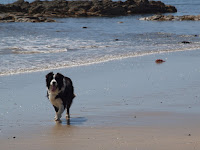5 How to get started - 10 Things - Terry White
CC How to get started - 10 Things - Terry White
General workflow - Infinite Skills
Workflow basics - Key shortcuts - Adam Lerner
Basic image adjustment -
Learn in One hour - Serge Ramelli
Creating depth - Exodist Photography
Hue, Saturation and Luminescence - Ed Gregory
Adjustment sliders - Ben Willmore
Adjust tone curve - Infinite Skills
Notes (to self):
Catalog - Restricted to one open at a time; holds all linked files.
Files remain non-destructive.
Move files/folders within Lightroom to avoid unlinked resource issues.
Retain original file name and track through keywords, ratings, picking and colour labels.
Use broad descriptive keywords on import: seasons, night, landscape and specific labels, to locate images when reviewing or editing.
Use Year-month-day - event format for folder creation.
If catalog becomes slow to use/search, use optimization feature.
Workflow practices developed:
Import images, name folder using convention, add broad labels;
Review images and add specific keywords, colour code, rate or pick selected images;
Identify image for adjustment, create a virtual copy (not required); and
In development, select Tone>Auto and review how L/room processes.
Adjust lens corrections, chromatic aberration, crop and profile correct as required.
Adjust settings to suit the images purpose:
Exposure - Adjust the overall light/dark of image;
Highlights - Adjust detail of the bright areas only;
Shadows - Adjust detail of the dark areas only;
White/Black - Adjust the extreme points to avoid blocky areas (Alt + slider assists greatly);
Clarity - Defines edges and good for landscapes, especially if blurry. Avoid use of people as it can highlight unwanted features;
Contrast - Adjusts available differences between the light and dark areas. Good for foggy/hazy images but using may require additional adjustments to exposure, highlights and shadows;
Vibrance - Mostly used to effect the pop of an image by adjusting overall colour;
Temperature - Adjust the level of cool and heat viewed in an image, blue more cool, yellow more warmth;
Tint - Adjust the green/magenta balance of an image.
White balance picker - Find a neutral area (white, grey, black), move the picker until the RGB values are as equal as possible +- 0.1 - ie: R 92.5, G 92.4, B 92.5 and click done.
Other tools: Adjust image on a gradient or on a circle using other tools. Useful to highlight/reduce specific areas.
Hue: The specific colour, within a group of colours. Adjusting the hue will change the colour for another colour within the same group. (Red - Pink, Green - Yellow).
Saturation: The power of the colour. for example at the apposing ends of green are Bright Green and Green Grey.
Luminescence: How bright or dull a colour is.
Details: Adjust to sharpen image and reduce any noise produced. Excessive amount can cause unnatural results.
Export: Set up x2 JPEG export presets for future use.
Practice results:
Wire at sunset
Original:
El Gorah Barracks, Western Boundary (c 2004)

Simple crop, clarity turned up.

Cropped, lots of saturation and noise reduction. Post-crop vignetting added. Spot removal processed.
Paris
Original: Paris France (c 2004)
 Cropped, detail adjustments with dehaze. A gradient placed at the top for darkening effect. Colour, black, white, shadow and highlight adjustments.
Cropped, detail adjustments with dehaze. A gradient placed at the top for darkening effect. Colour, black, white, shadow and highlight adjustments. 

Brisbane at night
Original: Brisbane CBD from Story Bridge (c 2004)
Cropped with detail (sharp/noise) adjustments, as well as saturation increases to greens, yellows and blues. Highlights, blacks and whites adjusted. Spot removal processed.
CSFrost





















